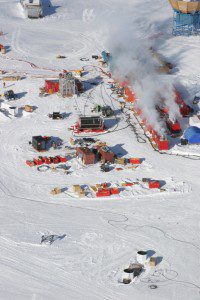
Perhaps the coldest hide-and-seek game ever played is under way as you read this.
The seekers are more than 300 scientists from around the world, including a University of Alabama physicist. Starring in the role as hiders are particles, smaller than atoms, called neutrinos.
And the numbingly cold site where the groups square off in this high-tech version of the children’s game? It’s about 1.5 miles beneath the South Pole.
How good are these subatomic particles at hiding? Well, despite the fact they’re everywhere – constantly bombarding you, me, and everything else on the planet – as scientists believe they have since the Universe’s beginning – actually seeing one is difficult.
And, although some of the greatest minds in particle physics are immersed in this $271-million-search, even they do not expect to actually see neutrinos. Instead, they are seeing only the evidence of where they have been and, more importantly, indications from where they came.
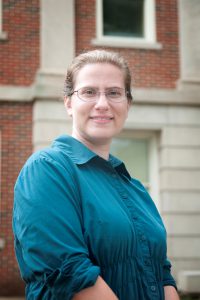
“A neutrino is the lightest particle we know of that has mass,” says Dr. Dawn Williams, a University of Alabama physicist, who serves as the project’s data quality coordinator. “We can never see a neutrino, itself. We can only see the particle that’s created by a neutrino.”
Those particles, called muons, are produced when a neutrino collides with an ice atom, radiating a blue light that can then be detected by one of the telescope’s current 4,000 sensors that lie encased in the ice underneath the Antarctic surface.
The point of the project is to learn more about the nature of these tiny neutrino particles as well as develop a deeper understanding of dark matter – a mysterious principle that some scientists believe hold answers related to the Universe’s origin.
The project, funded primarily by the National Science Foundation and led by researchers from the University of Wisconsin, is named IceCube, as it encompasses a cubic kilometer of ice.
Key to the scientists’ success in winning the high-stakes game is the world’s largest telescope. It’s a telescope that, rather than pointing toward the sky, points toward the center of the Earth. No wonder the experiment was previously dubbed by Scientific American magazine as the “weirdest wonder of modern astronomy.”
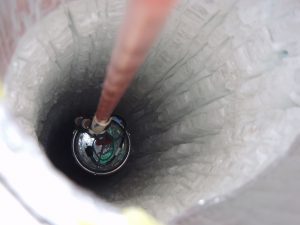
No one knows what every-day applications might result from this fundamental research project, which began collecting data in 2005, but history is filled with scientific discoveries that later lead to unimagined applications.
“One hundred billion neutrinos pass through every square centimeter of your skin every second of every day,” says Williams. “They go straight through us and straight through the Earth.”
In fact, neutrinos are so numerous, and the bizarre experiment so effective at potentially detecting the neutrinos, one of the challenges is sorting through the potential neutrino “noise” to find the targeted type.
“The goal of IceCube is to discover neutrinos originating from outside our galaxy,” Williams says. Those originating from our own atmosphere almost drown out those the scientists are targeting.
“We actually get 2,000 muons every second in IceCube from the atmosphere, and these are mostly not scientifically interesting to us,” Williams says. “We have to look for maybe a couple of reactions a year – underneath the 2,000 reactions a second. So, we have to somehow separate them out. It’s a difficult task.”
That difficulty is compounded by the harsh elements of Antarctica – the coldest, windiest and driest place on the planet.
So why did scientists select, as the experiment’s site, the South Pole – with its average annual temperature of -57 F, its constant breeze which sometimes transform into 50 mile-per-hour blasts and a dryness that frequently triggers both nose bleeds and the mother of all static electricity shocks for those enduring its elements.
A primary reason, Williams said, was the significant research infrastructure already in place there. Scientists have continuously occupied research stations at the site since the 1950s.
Another reason is the clearness and quantity of the ice at the pole. According to the project’s Web site, http://icecube.wisc.edu/, the extreme pressure created by the huge volumes of snow and frozen water create an ultra-transparent ice, enabling the detector to peer through the ice to recognize and record collisions between particles and ice atoms at great distances.
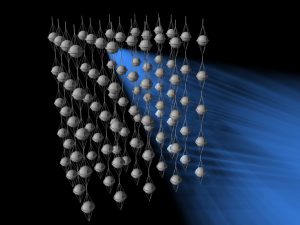
Because neutrinos pass straight though the planet, unhindered – the only known particle to do so – the telescope’s buried sensors point not upward toward the nearer southern skies but downward in search of neutrinos originating from the northern skies and traveling through the Earth. In this way, the scientists are using Earth itself to shield out muons from our atmosphere.
Some neutrinos are believed to result from violent events in space – such as gamma ray bursts, exploding stars and other cataclysmic phenomena such as black holes and neutron stars. By tracing these particles back to the sources, scientists hope to learn more about these phenomena that triggered them.
The project’s construction began on-site in January 2005 and is expected to be completed in 2011. Upon completion, the construction will involve the drilling of 86 holes, each to an average depth of more than 1.5 miles. Using an enhanced hot water drill, and superheated pressurized water, the researchers can drill 20 such holes in two months.
Cables, each containing 60 sensors, are then lowered, over the course of 11 hours, into the holes. Although soon permanently frozen in place, the sensors continue seeking and recording data from the collisions – transmitting it to a computer building located in the center of the more than seven dozen holes.
The magnitude of the detector is necessary to increase the odds of spotting neutrino collisions, the UA physicist says.
“If you have a small detector, you can have a lot of neutrinos pass through it, and they won’t interact. As you increase the amount of target area, increase the size of the detector, the probably of an interaction increases.”
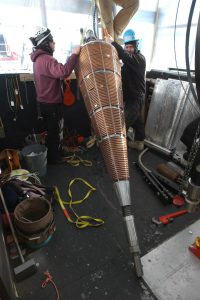
Williams accesses the data and ensures the software at the site is working properly via logging in remotely from her computer in Tuscaloosa. Although she traveled to the site in 2006 while a post-doctoral researcher at Penn State and regularly communicates with other researchers both electronically and via periodic meetings, she has no immediate plans to return to the site. However, a UA post-doctoral researcher, Dr. Pavel Zarzhitsky, and two of Williams’ graduate students, James Pepper and Donglian Xu, are scheduled to visit the site in January.
Williams remembers the sensation she felt upon taking her first gulp of Antarctic air.
“When you take in a breath of air, the fact that it’s that cold and the fact that it’s dry…it feels very strange. It’s almost the most extreme place you can go without being in outer space.”
Williams won a three-year, $516,000 NSF grant for her role in the project. The funding also supports the work of Zarzhitsky, Pepper, Xu and two undergraduate students who work alongside Williams.
“I’ve been interested in astronomy since I was a child,” Williams said. “I got interested in particle physics when I was an undergrad. Neutrino physics is interesting because it indicates that what we know about particles is not complete.
“I wanted to do something that combined astronomy and particle physics. I’m interested in connecting the very big and the very small – the whole universe and these very sub-atomic particles.”
And, if she gets to squeeze in a few rounds of hide-and-seek along the way, that’s all the better.